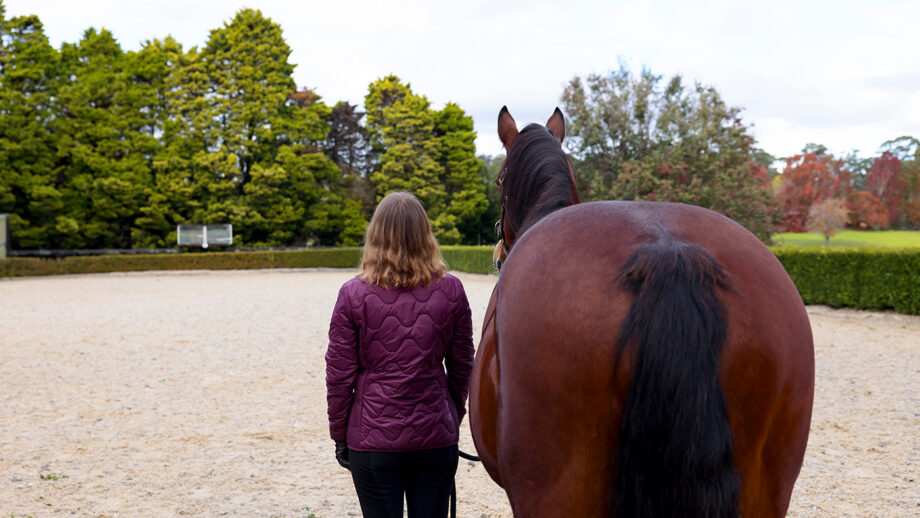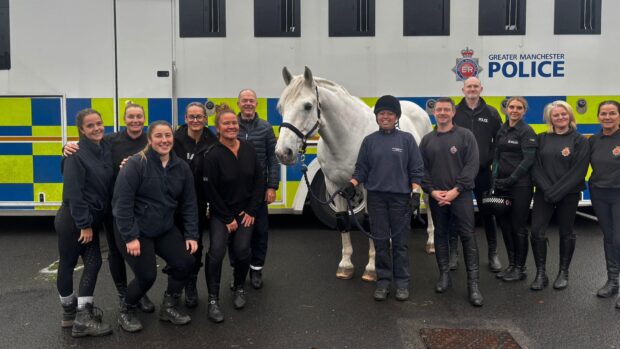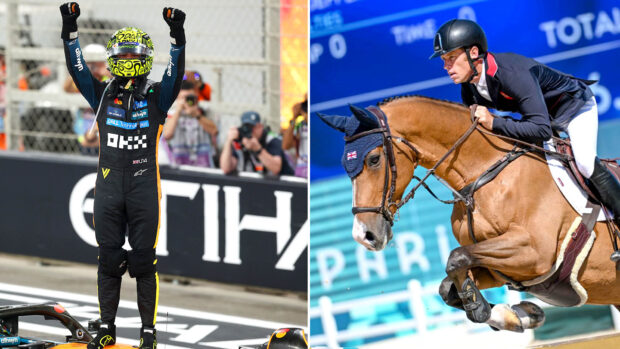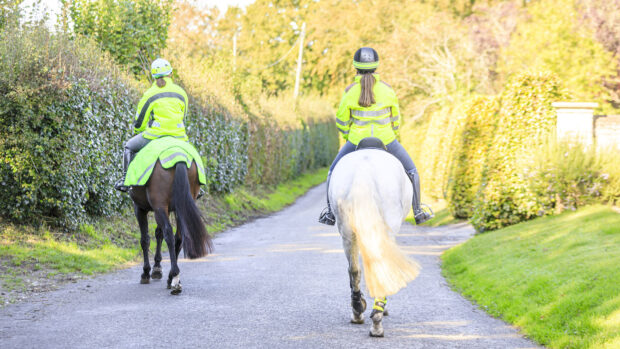Riding instructor and founder of The Power of Walk, Diana Waters, explains the benefits that can be enjoyed by you – and your horse – by slowing down and learning to be fully present in this article on how to introduce mindfulness into your equestrian life
As horse people, we often have two things in common: a deep love for horses and extremely full lives. Whether it’s juggling work, mucking out stables, or preparing for the next outing, slowing down can feel hard, almost impossible. But adding mindfulness techniques when you are with your horses can have a profound effect on both of you.
When time is tight and stress levels are high, it’s understandable that a sense of urgency seeps into our time with our horses. It might show up as a lack of patience during grooming, tension during schooling, or simply a feeling of being mentally elsewhere while tackling yard jobs. We all have those days.
But even a short pause can help us reset. Taking a moment to notice your horse’s movement, the sound of their breath, or the feel of their coat under your hand creates a small window of calm and connection. Mindful moments like these have proven health benefits, reducing stress, improving clarity and focus and helping us feel more grounded and calm.
The benefits can extend to your horse too. Horses are highly sensitive to human energy and the more calm, clear, and grounded you are, the safer and more settled your horse is likely to feel. It’s one of the most powerful training tools you have, and it doesn’t cost a thing.
How to introduce mindfulness with horses
Here are three exercises to help you become more present with your horse in your mind, as well as your body.
Breathe with your horse
Breathing is a simple yet powerful way to calm the nervous system and bring ourselves into the present moment. Horses breathe more slowly and deeply than we do, making them natural guides for regulating our own breath. By tuning into your horse’s breathing, you not only calm your body and mind, but this can also strengthen the sense of connection between you.
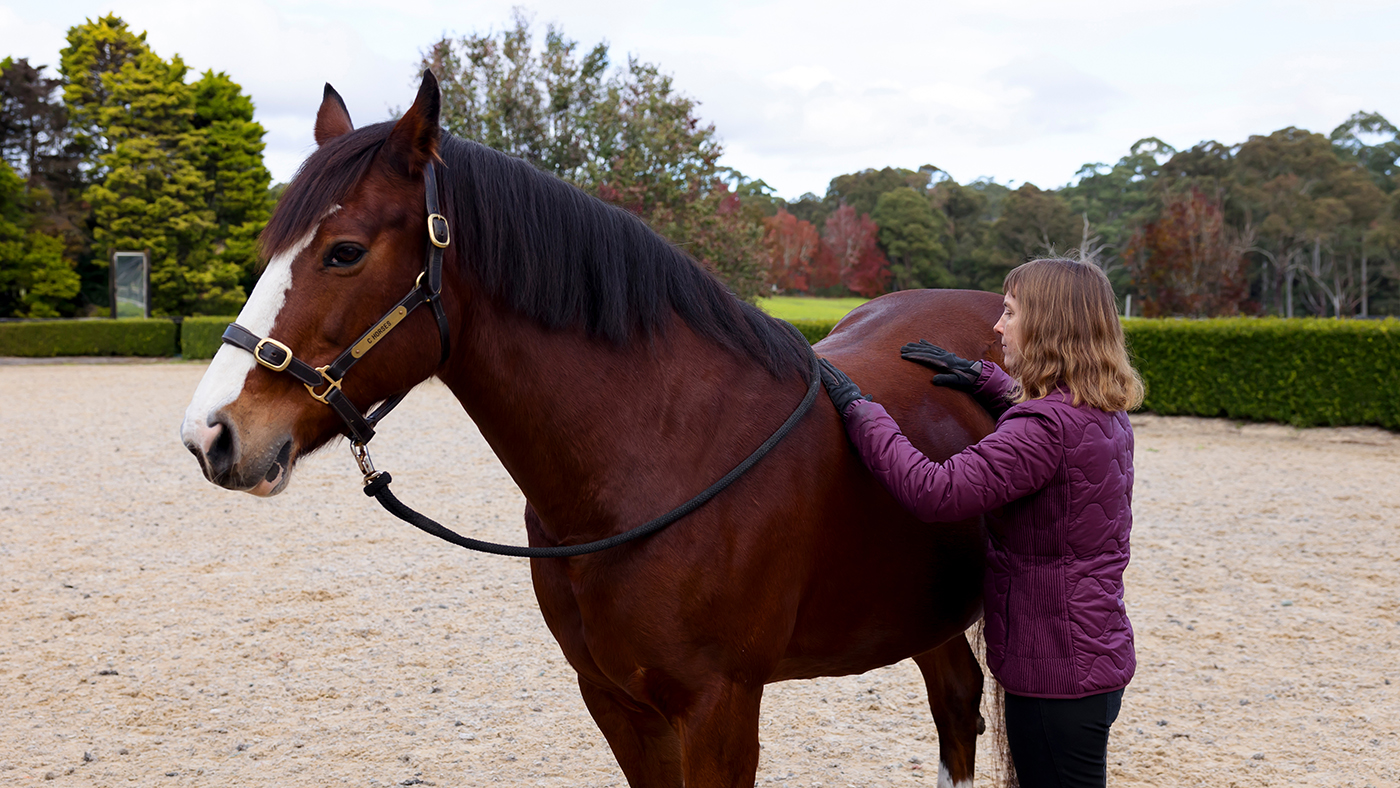
Credit: Belinda Taylor
What you need: Your horse, a headcollar and leadrope, and a quiet spot where your horse feels relaxed and is free from distractions or food.
Time: 3 minutes (or longer if you like)
Instructions
1. Begin with stillness. Stand beside your horse and place a hand gently on your own chest. Take a few moments to let your body settle and your mind slow down.
2. Tune into your horse. If your horse is comfortable with you doing so, place your hands gently on their ribcage. Pause and feel the gentle rise and fall of their breath beneath your hands. If your horse prefers not to be touched in that area, simply watch the movement of their flank instead.
3. Match your breathing. Let your own breathing begin to follow the rhythm of your horse’s breath, inhaling as they inhale, exhaling as they exhale. Keep the breath soft and relaxed.
4. Notice the shift. As your breath begins to align, you may notice a sense of calm spreading through your body. You may also find your horse becoming more settled and still. Allow yourself to stay with the rhythm for a few minutes, simply enjoying the shared quiet.
Mindful grazing
Spending quiet time beside your horse as they graze can be surprisingly calming. Horses naturally move slowly and deliberately when grazing, and this simple rhythm can help settle your nervous system too. Mirroring your horse’s movements is a gentle way to tune in and feel more present.
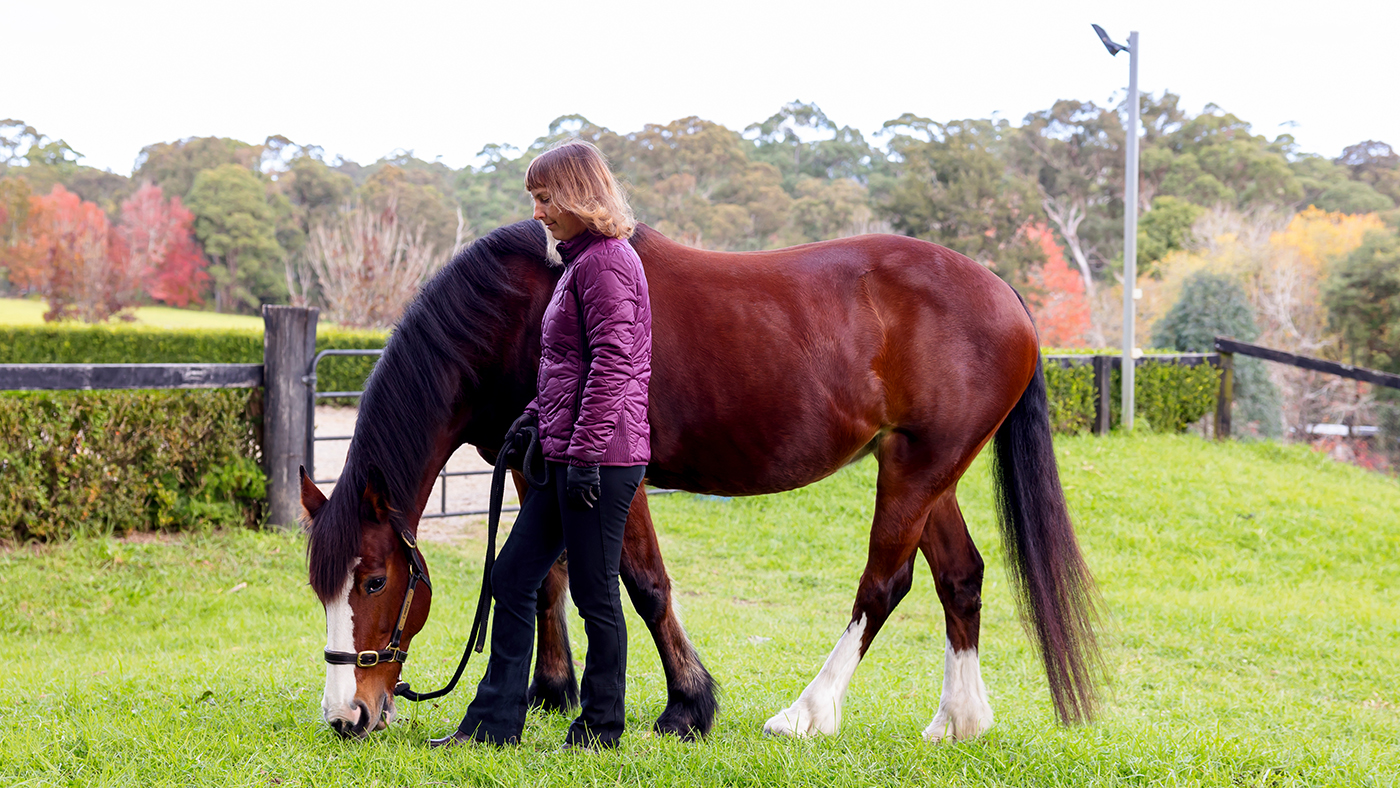
Credit: Belinda Taylor
What you need: Your horse, a grassy area, and a headcollar and leadrope. Alternatively you can do this with your horse loose in the field if it’s safe to do so.
Time: 3–5 minutes
Instructions
1. Stand beside your horse while they graze. Take a few calm, steady breaths. Let your shoulders drop and soften your focus.
2. Watch their front feet. Try to match your steps with theirs—when they take a step forward, you do too. You might find they step in a rhythm that’s easy to follow.
3. Notice their grazing pattern. Do they eat in an arc? Favour one side? Try gently moving your head as they do. This soft mirroring helps you stay connected to the moment.
4. Stay relaxed. There’s no pressure to “get it right”. If your horse walks away, either follow at their pace or let them be. You can always try again later.
5. Reflect on how you feel. After a few minutes, pause and notice any changes in your own body or state of mind – is your breathing calmer? Are you feeling less tension in your body? Or have you felt a shift in focus? Don’t place judgement on these changes, simply notice and acknowledge them.
Mindful grooming
Grooming can be a valuable opportunity to slow down, connect, and tune in with your horse. Mindful grooming is about shifting your focus from getting the job done to being fully present, observing your horse’s responses, noticing their body, and allowing both of you to settle into a calmer state together.
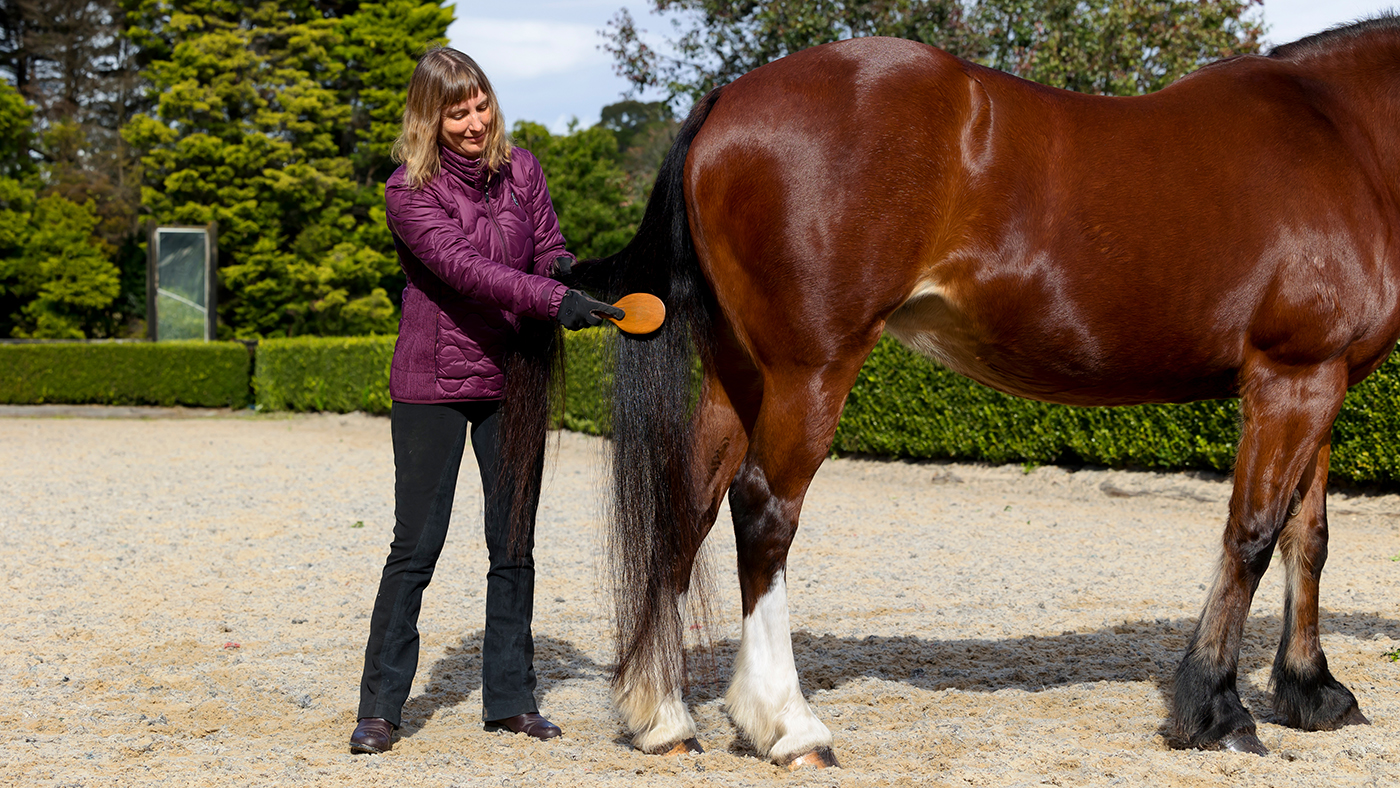
Credit: Belinda Taylor
What you need: A grooming kit, your horse in a safe space and ideally a quiet environment without too many distractions.
Time: 10 minutes (or longer if you can)
Instructions
1. Take a moment before you start. Stand quietly by your horse for around 20 seconds. Notice your breath, soften your shoulders, and let go of any tendency to rush or tension in your body. This helps you arrive fully in the moment.
2. Begin with intention. As you reach for the brush, remind yourself this isn’t just about getting the job done. It’s a chance to check in with your horse and yourself.
3. Focus on the physical connection. As you groom, pay attention to the feel of the brush in your hand, the texture of the coat, and how your horse responds. Notice areas where they lean in, twitch or flinch. Take your time.
4. Match your breathing to the rhythm of your grooming. Try to breathe slowly and evenly. Let your breathing guide your strokes. If you catch your thoughts drifting, gently return your focus to the present moment.
5. Stay observant. Use this time to scan your horse’s body for any changes—tight muscles, heat, swelling, or signs of soreness. This can help you spot issues early and adapt your training accordingly.
6. Finish softly. When you’re done, take another slow breath. You might place your hand gently on your horse’s neck or shoulder and just stand with them for a few seconds before moving on.
You can also practise mindfulness with horses when you’re riding, as Diana will explain in a follow-up article.
Photography by Belinda Taylor
Location: by kind permission of C Horses Equine Assisted Therapy
- To enjoy more expert advice on how to improve your relationship with your horse, subscribe to the Horse & Hound website
You may also be interested in:

‘The more time you “waste”, the better your relationship’: how less is more for Olympic ‘mare of all mares’

Boost your confidence in the saddle with these 6 steps to channel focus and shake off the nerves
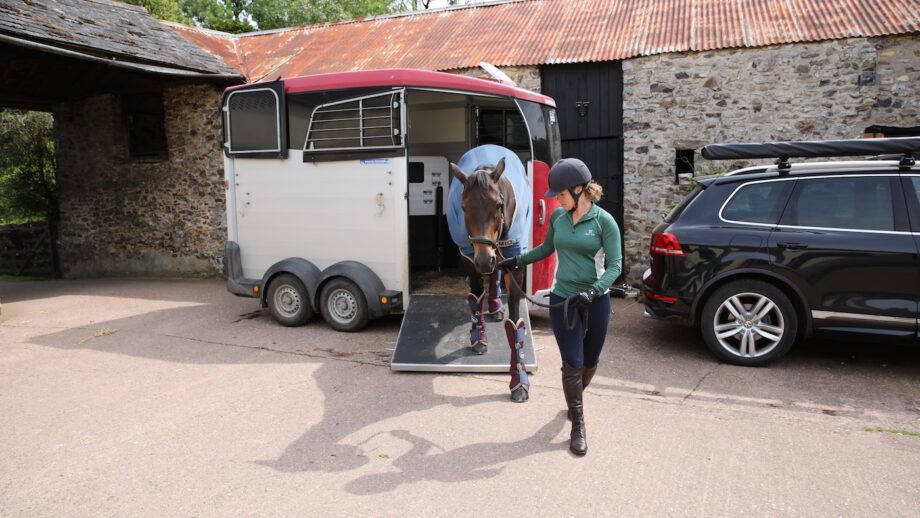
What should I be doing when with my new horse? A guide to the firsts, and why it’s not wrong to seek help sooner rather than later

Transform rider nerves into positive energy with Charlie Unwin’s expert tips
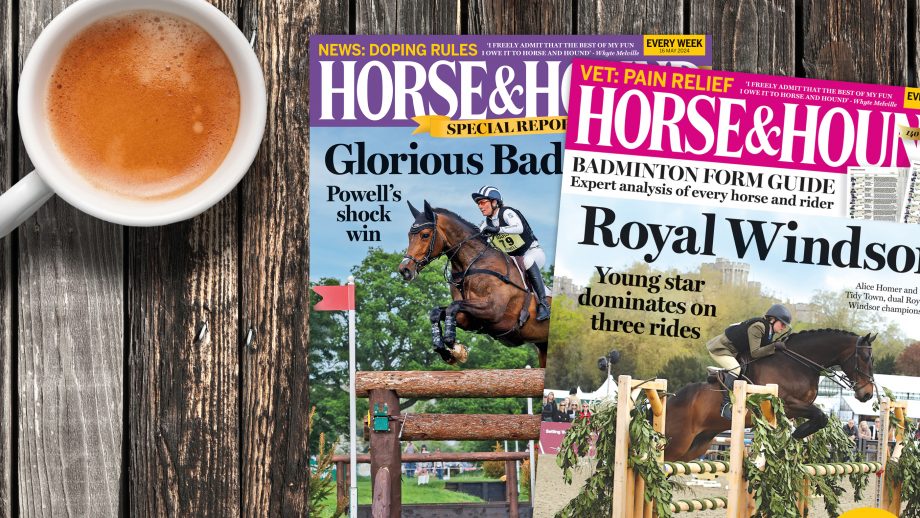
Subscribe to Horse & Hound magazine today – and enjoy unlimited website access all year round

